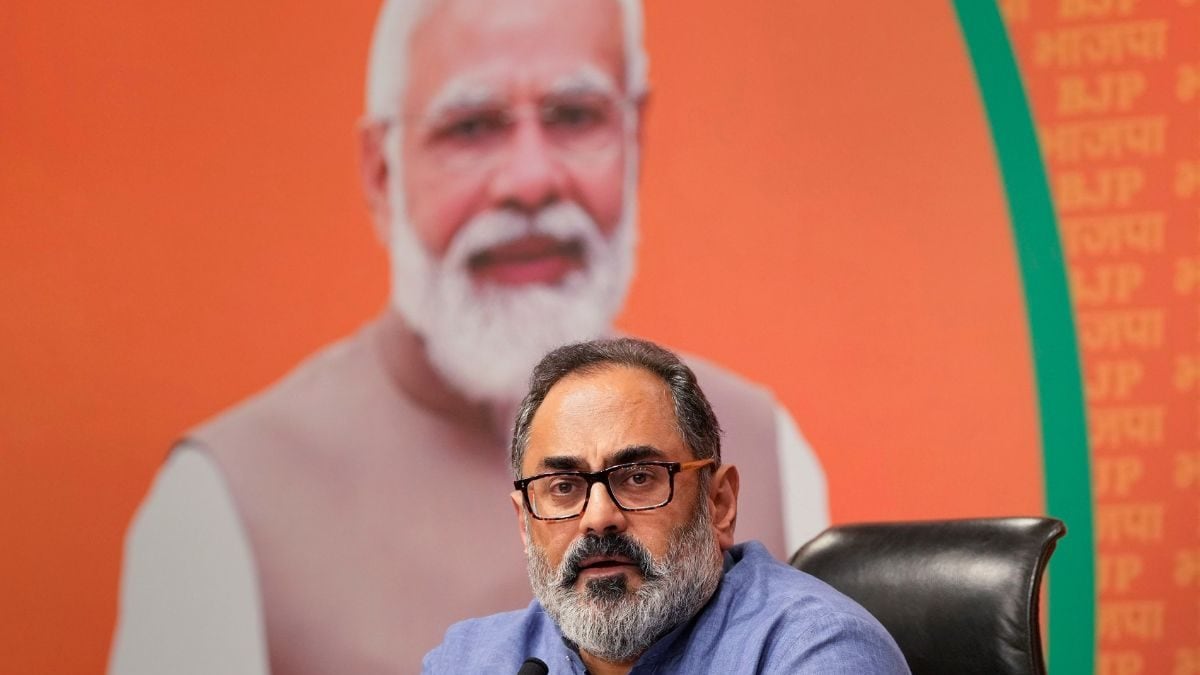
India is presently on track after lacking a number of alternatives up to now, stated Minister of State for Electronics and Information Technology Rajeev Chandrasekhar on Thursday, speaking in regards to the second version of the worldwide summit, Semicon India, which can be held in Gandhinagar, Gujarat, from July 28-30.
Over 200 prime delegates and main semiconductor corporations all over the world are attending the summit, whilst, Indian startups, semiconductor expertise and capabilities can be on show.
He stated: “India’s story of semiconductors, the vision of India being a semiconductor nation, started 19 months ago for the first time. We are on track to do it in the next 10 years with this $10 billion, what countries like China did with $200 billion dollars and took 25-30 years, but could not succeed.”
Chandrasekhar then highlighted that in 1960, throughout the semiconductor revolution, Fairchild Semiconductor thought of constructing a fab in India, however “bureaucratic lethargy chased them away to Malaysia”. Two years later, BEL’s lab for silicon and germanium transistors couldn’t compete with cheaper ICs from China, Taiwan and South Korea, resulting in a number of unit shutdowns.
India’s VLSI facility Semi-Conductor Laboratory (SCL) perished as a mysterious hearth in 1989 halted manufacturing till 1997. Then in 2005, a multinational semiconductor participant tried to begin operation within the southern a part of the nation, nevertheless it didn’t work out and the venture moved to China, ensuing within the lack of a semiconductor facility and 4,000 jobs.
In 2006, after the UPA authorities did not formulate a reputable coverage for semiconductors, India missed out on a multibillion-dollar chip plant by Intel. Craig Barrett, then chair of Intel, said that the Indian authorities’s gradual response brought on them to overlook the window to commit their manufacturing capability.
However, the minister additionally famous that specialists predicted the semiconductor trade to contribute 6.3% of India’s GDP by 2010, however once more due to lack of coverage India’s probability of reaching self-sufficiency in semiconductor manufacturing was misplaced.
In 2011, the federal government invited an Expression of Interest (EoI) for a semiconductor fab, nevertheless it resulted in a failed try as the federal government didn’t take additional motion. Two years later, the World Semiconductor Council (WSC) urged then PM Manmohan Singh to make India a driver of high-tech exports and manufacturing, together with semiconductors. But no motion was taken at that second. In the identical 12 months, the Fab City, which was launched with fanfare, remained a pipedream.
Chandrasekhar stated: “It is very important to note that in 1987, India was just two years behind the latest chip manufacturing technology. Today, we are 12 generations behind.”
However, he then highlighted the milestones achieved by the present authorities which embody approving the Semiconductor India Program 2021 and launching of Digital India RISC-V (DIR-V) program aiming to develop next-generation processors.
Additionally, he stated that beneath SemiconIndia futureDESIGN Design Linked Incentive (DLI) Scheme over 30 semiconductor design startups have been arrange in India, 5 startups have already acquired monetary help and one other 25 are being evaluated for his or her next-gen merchandise.
The minister additionally highlighted the current initiatives and commitments made by Micron Technologies, Applied Materials and Lam Research, in addition to a number of proposals in ATMP and fabs, that are being evaluated by India Semiconductor Mission, selections being made to modernize the SCL facility in Mohali and arrange a world commonplace India Semiconductor Research Center (ISRC).
He stated, “This is the report card of what has been finished within the final 19 months of this authorities versus in 60-70 years of what had occurred.”
Source: www.news18.com




